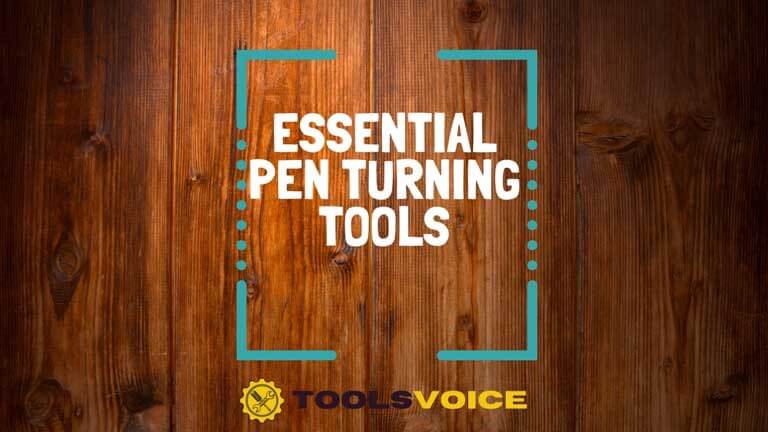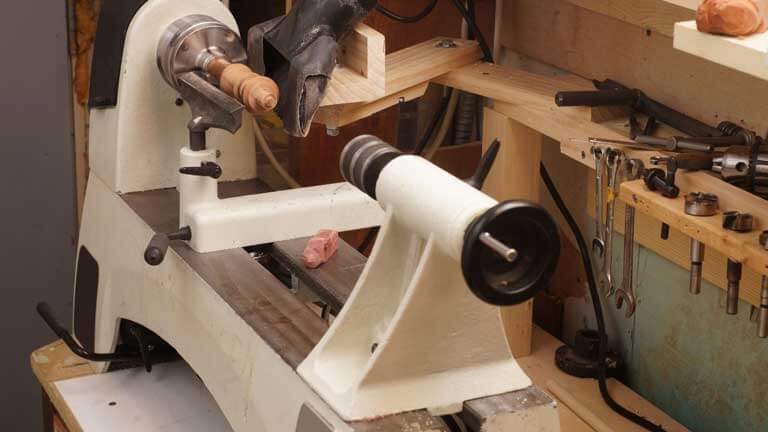Pen turning is a form of woodworking that has been practiced by craftsmen for centuries. While it may seem like a simple process, there are actually many intricate steps involved in the creation of each piece.
For this reason, it is important to have the right tools to get the job done correctly and efficiently. In this blog post, we will explore 11 essential pen-turning tools that every craftsman should have!

Essential Pen Turning Tools
If you are looking for a new hobby or want to develop your woodturning skills, then pen turning might be the perfect fit. The tools that you need for turning depend on what type of work you will be doing.
Pen Turning Lathe

A lathe that is used for turning pens. Pen turners use lathes to shape and finish pens from blanks of wood. Basically, the wood lathe is used by most people in order to create round objects like spindles, bowls, and pens. But the pen turning lathe is specially made for pen turning.
Drill bits
Every pen kit in use will indicate the accurate size of the drill bit needed for the lower and upper pen tubes. There are standard twisted bits that are very appropriate for drilling blank materials for pen turning, but you have to consider other options.
Brad joint drill bits, parabolic drill bits, and bullet nose drill bits are very effective. They are perfect for materials like antlers, synthetic products, exotics, and alternative types of materials.
Drill press

The process comes before mounting a blank pen material on the surface of the mandrel for turning. Before you start drilling, you need to know the proper size of the hole to go through the center of the blank.
The press will keep your blank stationary and intact before the actual drilling is done. The hand-held drill is not really an advisable option because it is harder to coordinate. With experience and extra care, the hand-operated drill can be used.
Pen mandrels
The pen mandrel is the platform where your bushings and pen barrels are mounted, and there are several formats of pen mandrels available. Among all the types of mandrels, the double mandrels stand out in popularity and use.
With double mandrels, you can mount the lower barrel and upper barrel of the pen simultaneously for turning and for finishing.
One other mandrel is the single mandrels, and they are pretty handy too, but they are less common and usually less effective in working speed when you compare them with the double mandrel.
Adjustable mandrels are also available. They allow the shaft to be moved out or in to fit the project requirement, a feature that gives you some extra flexibility.
Barrel trimmer
After tubes have been glued within the blanks, a barrel trimmer is instrumental in squaring up ends of pen blanks. A lot of sheep teeth of the round cutter head are linked with the metal pilot shaft.
The pilot shaft has the same size as the pen tube interior, and the whole setup is within the pen mill. Squared drilling axis of the hole, the mill inserted into the tube gets the blank cut’s end. Pen blanks won’t be appropriate or fit well in alignment with the mandrel if the tube end is not squared as needed.
Turning tools
Turning a pen doesn’t really need any rare pen tool; that is the beauty of pen turning itself. To do the pen turning of your projects, most of the turning tools will get the job done without having to acquire specific turning tools.
A lot of experts prefer using micro-turning tools when it comes to pen works because of the ease-to-manipulate small bevels and the finesse of the cuts. The small bevels can do wonders on little blanks.
There are about four major turning tools needed that are sufficient for the majority of pens.
The first one is a roughing gouge of ¾ inches (20mm).
The second one is a skew chisel of ½ inches (12mm).
The third one is a super-thin parting tool of 1 1/6 inches (5mm).
The fourth one is a spindle gouge of ¼ inches (6mm).
Pen Vise
A tool that holds a pen securely in place for cutting, shaping, or sanding. It is either fitted with regular jaws (like the ones on your bench vise) or has specially designed curved jaws to hold pens of various shapes and sizes.
Assembly jig
When your pen has been turned and finished, you have to use the components of a pen kit to assemble it. Pen assembly jigs are crucial because they can be adjusted for various pen sizes and different pen types without damaging any component. A drill press or bench clamp, or perfect hand clamp can be used in the absence of the assemble jig.
Pen bushings
To accurately decide the barrel’s external diameter, pen bushings have to be mounted on the pen mandrel at the opposite ends of the pen blanks. The metal parts from your kit that you use to assemble your pen are the same size as the pen bushings.
Different pen styles have unique pen bushings, so you will always need another set of pen bushing when turning another pen style. A great attribute of pen bushings is that they are very reusable for various pen turning projects.
Rasp
A rasp is a rough file used to create shapes in wood. They come in various sizes, and the smaller ones are perfect for shaping pen blanks before cutting them into individual pens. This tool will be especially helpful when it comes time to sand your project down!
Sandpaper for finish polishing and buffing
It is used only in a finishing step, not as a part of shaping or smoothing your blank. It can be found in different grits ranging from 60 to 400. Lower numbers are coarser and are used to remove a lot of material, whereas higher grit numbers take off less.
Wrapping Up!
We hope you found this blog post helpful to enrich your knowledge on pen turning. When it comes to working with wood, not having the right tool for the job can be frustrating and time-consuming!
But with these eleven essentials in your toolbox, you’re sure to find success when crafting a new pen or art piece. Now that you’re equipped with the right tools, it’s time to go get into pen turning!